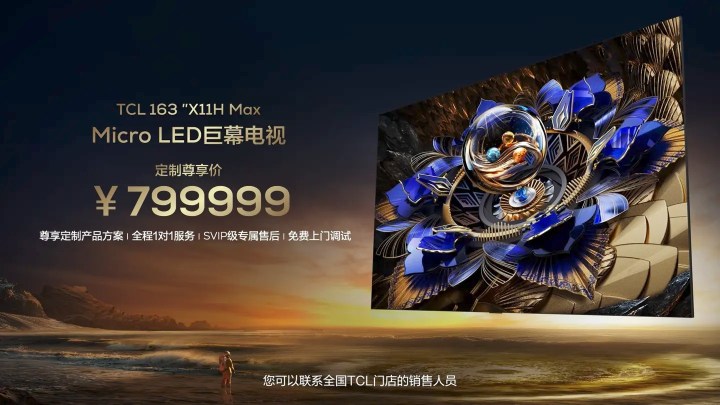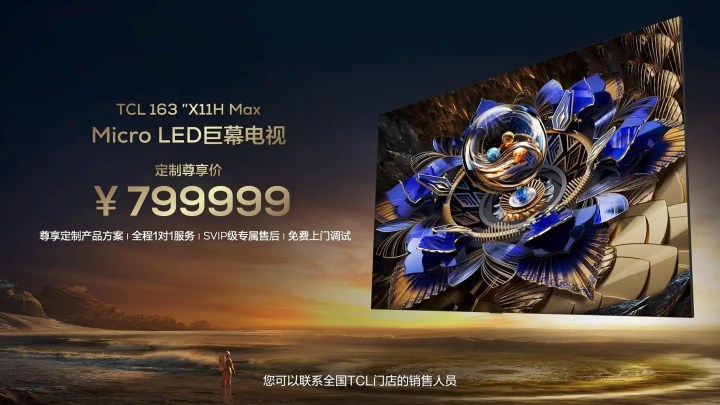
When it comes to truly massive screen sizes of 110 inches or larger, it’s hard to beat microLED. And when it comes to microLED, it seems it will be very hard to beat TCL. After showing off what we thought was a prototype 163-inch microLED TV at CES 2024, the company appears to have turned it into a real product — dubbed the X11H Max — which it will soon start selling for the equivalent of $111,300 (799,999 yuan), according to tech publication, ITHome.
That’s a hefty price tag, but as other observers have noted, it actually makes the TCL X11H Max the most affordable microLED TV so far. According to its U.S. website, Samsung’s 2022 110-inch model still costs $150,000, while LG’s 136-inch Magnit microLED sells for a reported $299,999. Suddenly, $111,300 doesn’t sound so bad.
Not that most of you will be able to take advantage of TCL’s exceptional pricing: for the moment, the X11H Max is a China-only model.
But hopefully, that will change in the near future because this TV boasts some remarkable specs. The obvious highlight is its size. At 163 diagonal inches, this 4K TV stands roughly 80 inches tall. That’s 200cm, or, as I like to think about it, one Darth Vader.
It can achieve an eyeball-searing 10,000 nits of peak brightness, which pushes the theoretical limits of many HDR formats and can apparently reproduce 22-bit color. We’re not entirely sure how that works or if we’ll ever see video content in 22-bit color, seeing as most HDR formats cap out at 12-bit.
The giant screen also has some impressive sound system options. Out of the box, it runs a 6.2.2-channel system, but that can reportedly be expanded into a 7.1.4-channel solution (though why we lose a low-frequency effects channel in this scenario is unclear).
As is the case with super-large microLED displays, the X11H Max is assembled from smaller display modules, so there might be the tiniest amount of detectable seams between the panels. TCL claims that the response time for these panels is 0.03 milliseconds, which is outrageously fast when you consider that LG’s OLED — already faster than the eye can detect — clocks in at a claimed 1 millisecond.
MicroLED and OLED are similar in that both produce perfect blacks because each pixel is self-illuminating, and thus, they don’t need a backlight. However, microLED can get far brighter without damaging its components, and its modular nature means there’s theoretically no limit to how big a microLED display can get (other than your wall and your wallet).
Editors’ Recommendations
Services Marketplace – Listings, Bookings & Reviews
